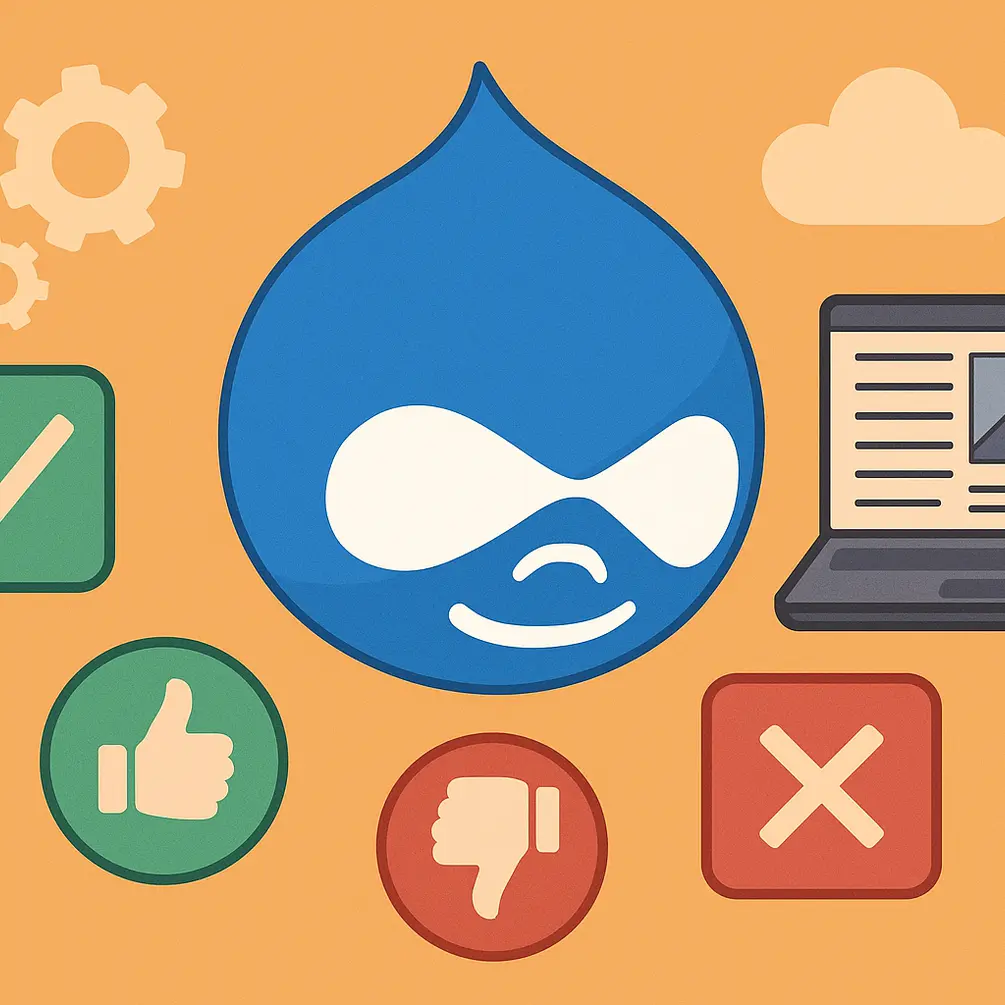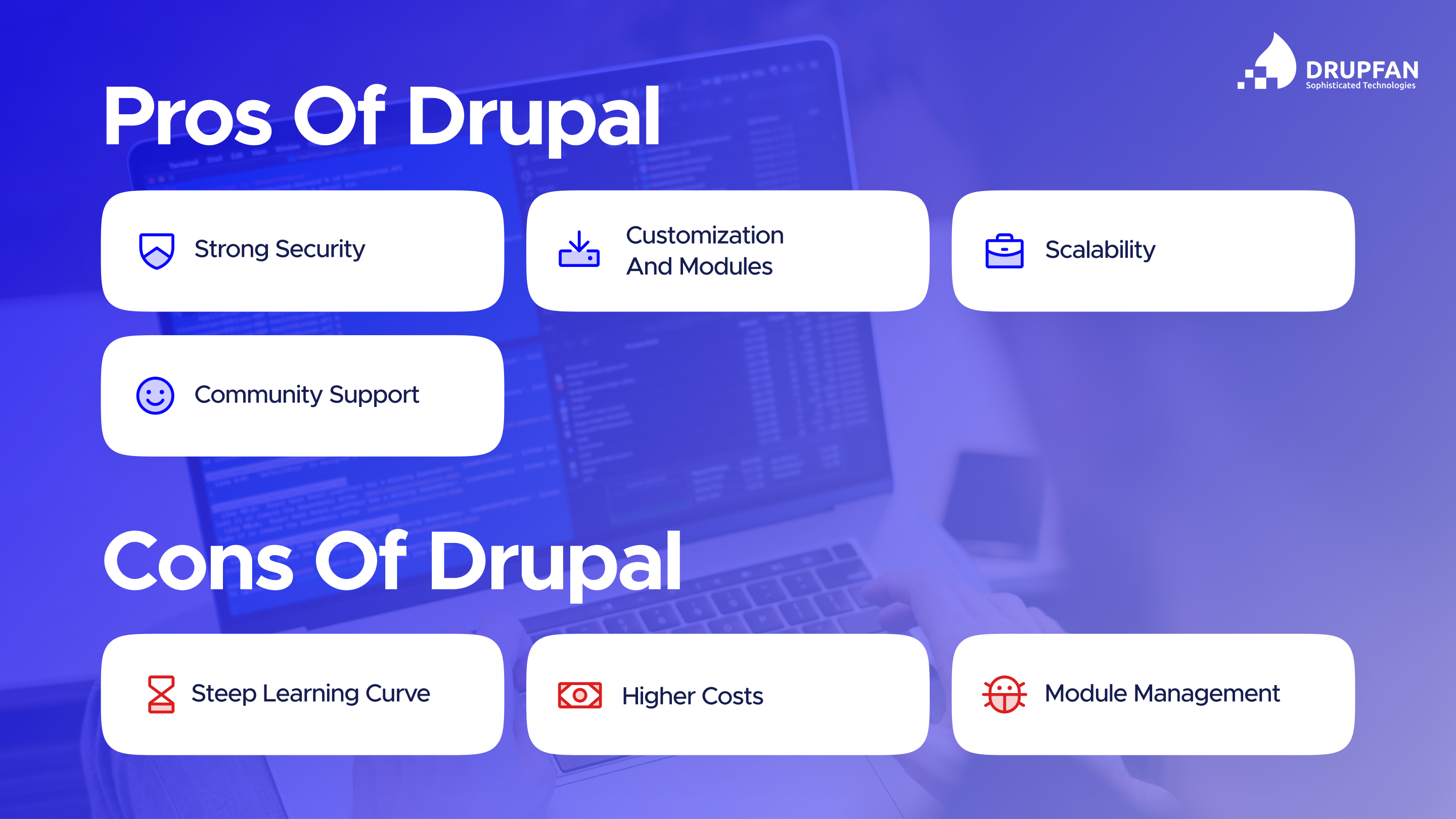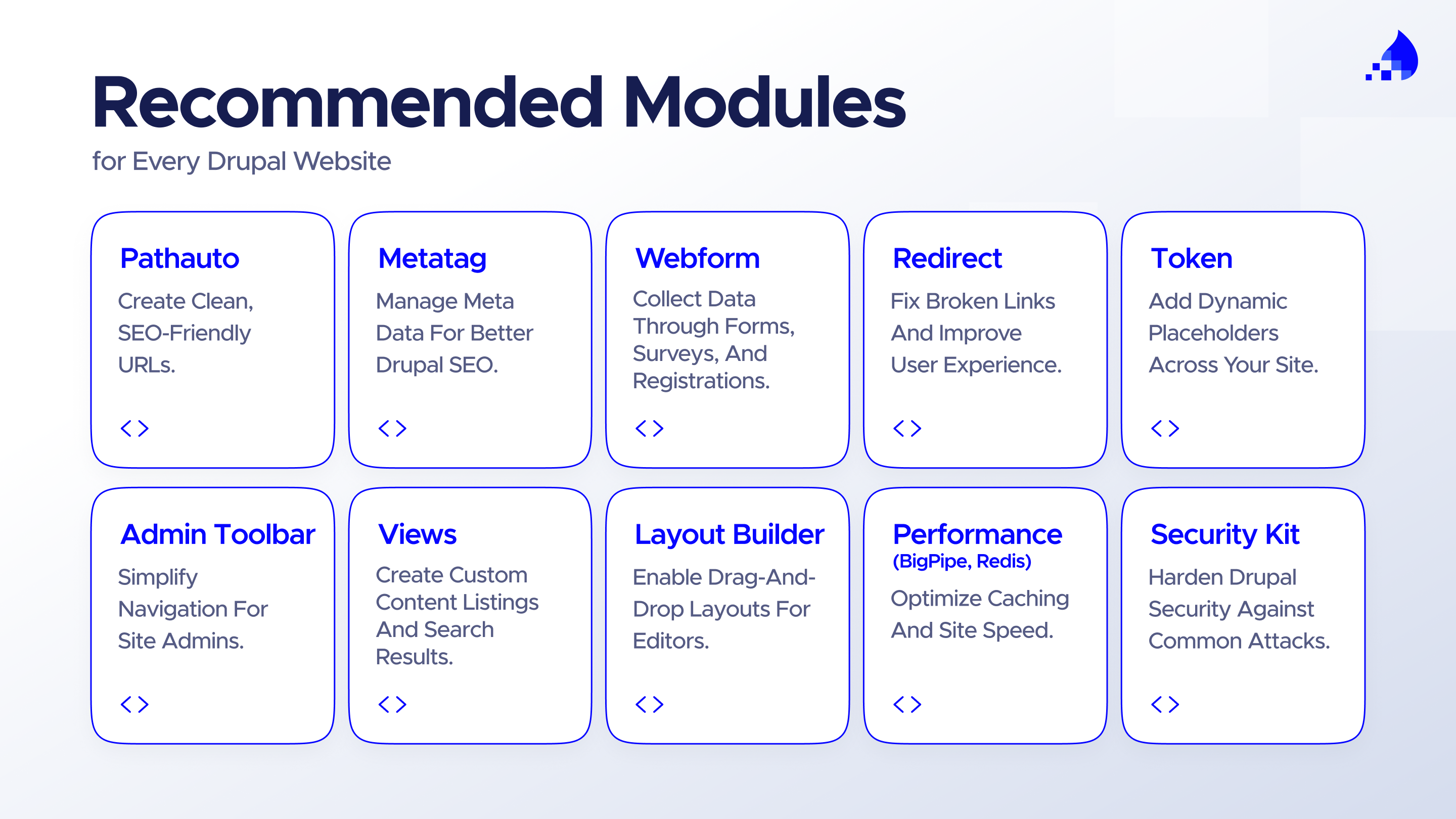Cons of Using Drupal: Challenges and Considerations for Your Drupal Web Projects
Just like any open source content management system, the Drupal CMS has its drawbacks. While many organizations benefit from its scalability and customization, it is important to consider the cons of choosing Drupal before making a decision. Below are the most common challenges and practical ways to address them.
Steep Learning Curve
Drupal offers unmatched flexibility for a web developer to build complex sites, but this comes at the cost of a steep learning curve. Compared to more user-friendly platforms, creating and managing content in a site using Drupal requires training. To achieve a better user experience, many teams adopt Layout Builder, headless frontends, or streamlined editor workflows. Since Drupal has a steep learning curve, editor training is essential.
Higher Cost and Developer Time
A Drupal project often requires significant investment in modern web development, especially when it comes to custom module development, testing, and enterprise-level hosting. These costs are higher than using WordPress plugins, but the payoff comes with a more stable, tailored solution. Over multiple versions of Drupal, the platform has proven itself as a modern web development framework that scales well for enterprise-grade projects.
Module Management Risks
With thousands of contributed extensions and themes available, choosing outdated or unsupported ones can create compatibility issues. Best practices from Drupal.org recommend relying only on actively maintained contributions, keeping the overall number limited, and testing thoroughly before deployment. Following these guidelines helps prevent instability caused by abandoned third-party components.
Admin UX for Editors
Compared to WordPress or Joomla, Drupal’s admin interface demands more setup and configuration. Editors may find it less intuitive at first. Mitigation strategies include installing editor-focused admin themes, training content teams, and leveraging UX improvements. This ensures Drupal meets accessibility requirements, keeping content accessible to people, including users with disabilities.







